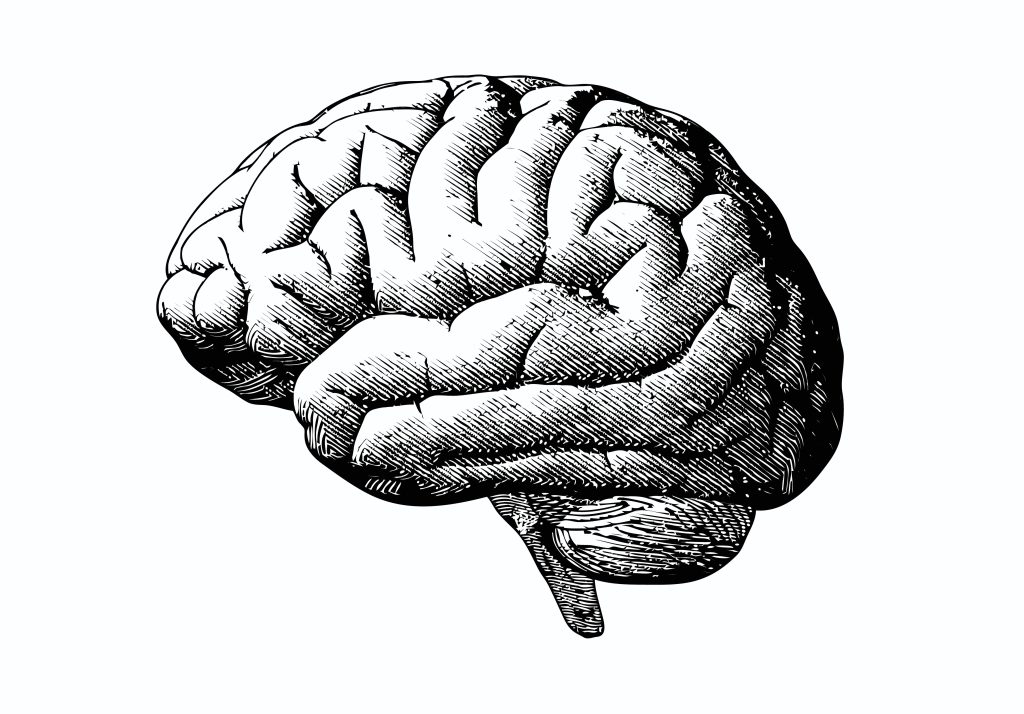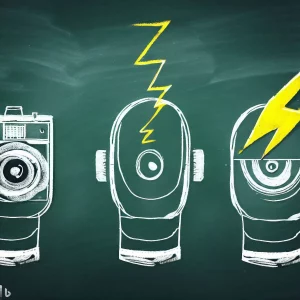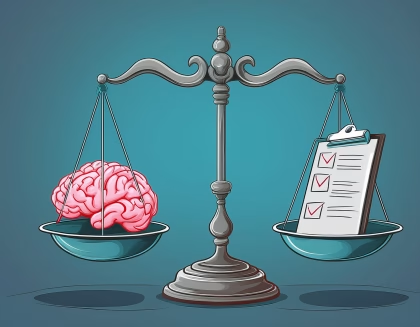Explore the intricate world of psycholinguistics with iMotions, delving into how we acquire, understand, and produce language. This comprehensive guide covers language comprehension, production, acquisition, and the cognitive processes involved, offering insights into education, communication, and technology applications.
The question “What is Psycholinguistics?”, is also the question of how we use and learn language. That is why this blog might read as a paradox because you will be reading this blog which is about how you are able to read this blog. When you think about it, have you ever wondered how you’re able to read and understand the words on this page, or any page in a language you understand, so effortlessly?
In this article, we will introduce some of the main topics and methods of psycholinguistics, such as language acquisition, language comprehension, language production, and second language acquisition. We will also discuss some of the applications and implications of psycholinguistic research for education, communication, and technology.
We are all naturals
Have you ever been amazed by how quickly you can think of the right words to say in a conversation or identify the right connotations in a written text? These are just a few of the everyday examples of the complex subject matter of psycholinguistics.

Psycholinguistics is the study of how we use and understand language and what processes that happen when we do. It’s a field that combines elements of psychology, linguistics, neurolinguistics, neuroscience, and computer science to explore the cognitive processes involved in language production and comprehension.
How we talk
One of the most fundamental aspects of psycholinguistics is how we recognize and understand speech sounds. The human brain can recognize and distinguish between thousands of different sounds, which we use to form the building blocks of language. For example, the sounds /b/, /d/, and /p/ are all produced in the same area of the mouth, namely the front but differ in the way they are made. Our brains can recognize these subtle differences and use them to distinguish between words like “bot”, “dot”, and “pot”.
Once we’ve recognized the individual sounds in a word, our brains have to put them together to form meaningful units of language. This process, known as phonology, involves understanding the rules for combining sounds to create syllables and words. For example, in English, we have rules for which sounds can be combined at the beginning and end of words, and which sounds can be combined in the middle.
Once we’ve recognized and combined the sounds of a word, we have to assign meaning to it. This process, known as semantics, involves understanding the relationship between words and their meanings. For example, we understand that the word “dog” refers to a four-legged animal that is commonly kept as a pet.
In addition to understanding individual words, our brains also have to process the syntax of sentences. Syntax involves understanding the rules for how words combine to form grammatically correct sentences. In English, we know that the subject comes before the verb in a sentence and that the order of words can change the meaning of a sentence.

Through research in the field of neurolinguistics, we know that all of these processes happen in real time, and our brains can perform them incredibly quickly and effortlessly. In fact, we’re often able to recognize and understand words and sentences even when they’re presented in noisy or difficult listening conditions.
Another central aspect of psycholinguistics is concerned with understanding how language is produced. Language production involves a series of processes, including selecting the right words to use, organizing those words into grammatically correct sentences, and articulating those sentences in a way that others can understand.
The processes of learning how to write, read and talk, are all monumental tasks considering how much cultural, and connotative knowledge is needed for even essential communication. Unsurprisingly research has shown that language production involves complex cognitive processes, such as working memory, attention, and inhibition.
Where in the brain is language processed and produced?
Language production, acquisition, and processing are central aspects of functioning in the world, as they pertain to both spoken, written, and read language, and all the social, cultural, and interpersonal implications that come with it. That is why several parts of the brain work, either solely, or partly with language in some shape or form.

To understand the subtleties, social cues, and abstract levels of language all the different parts of the brain have to work together, and damage to any of these centers can result in loss of significant processing power in language understanding. Below you can see a list of the most central parts of the brain concerning language:
- Broca’s area: along with Wernicke’s area, this area is located in the cerebral cortex in the frontal lobe and is involved in the production of language and the formation of grammatically correct sentences.
- Wernicke’s area: This area is also located in the temporal lobe, and is central to the comprehension of written and spoken language.
- Arcuate fasciculus: The arcuate fasciculus is the term for the connections between Broca’s and Wernicke’s areas. Information related to processing, comprehension, and production of speech is passed through these neurons.
- Angular gyrus: This area, located in the parietal lobe, plays a role in complex language functions, including the processing of written language and converting written symbols into their corresponding spoken sounds.
- Inferior parietal lobule: This area, located in the parietal lobe, is involved in the processing of grammatical structures and sentence comprehension.
- Supramarginal gyrus: This area, located in the parietal lobe, is involved in phonological processing and the mapping of sounds to their corresponding letters.
- Temporal pole: This area, located in the temporal lobe, is involved in the integration of semantic information and the formation of complex meanings from individual words.
- Hippocampus: This area, located in the temporal lobe, plays a role in the formation and consolidation of long-term memory, including language-related memory.
Language and emotions
Language production, the physical act of saying words in coherent sentences and in the right situations, constitutes a significant part of psycholinguistics, at least in regard to the person talking. There is, however, an entirely different level of communication that is woven into the mere aspect of talking, and that is the emotional valence being conveyed by the speaker and interpreted by the listener.
When we engage in conversation, we don’t just listen to words – we perceive emotions woven into the fabric of speech. The way a phrase is intoned, the subtle fluctuations in pitch and rhythm, and the cadence of each syllable can convey a host of different emotions.
Imagine the following sentence spoken with the same words but different emotions: “I can’t believe you did that.” Try saying that sentence with genuine surprise or with anger and disbelief. In both cases, the words remain the same, but the way they are delivered – the melody of the speech – changes. This melody, technically referred to as “affective prosody,” includes elements like pitch, rhythm, intensity, and duration.
Specific emotional valences – positive, negative, or neutral – are associated with distinct patterns of affective prosody. When we speak with joy or excitement, our pitch tends to rise and fall rapidly, creating a musical-like pattern. On the other hand, speech conveying anger or sadness often involves abrupt changes in pitch and a more monotonous rhythm. These subtle variations might seem imperceptible, but our brains are highly attuned to picking up on them.
While emotional valence in speech is a universal phenomenon, its interpretation can vary across cultures and even among individuals. Cultural norms and linguistic differences play a significant role in shaping how emotions are expressed through prosody. For example, certain cultures may value emotional restraint and use subtle cues, while others might encourage more overt displays of emotion.

Furthermore, personal experiences and differences in sensitivity contribute to the diversity in how we perceive emotional valence. Some individuals might be exceptionally attuned to emotional cues in speech, while others may rely more on contextual cues or facial expressions to understand emotional intent.
When engaged in conversation, our brains are essentially performing a running speech analysis as well as a voice analysis. We not only listen to what is being said, but our brains are also hard at work analyzing how something is being said in order to get the full amount of information being conveyed both physically and subliminally.
How to measure psycholinguistics with biosensors
With the emergence of non-invasive technology aimed at measuring, tracking, and analyzing the processes of the brain, the study of language processing, production, and acquisition has taken leaps and bounds. From having to rely on severing nerve clusters in the brain and seeing what stopped working (which was done in the 19th century), researchers can now conveniently and quickly measure how people process language-related tasks with the help of biosensors.
Eye Tracking
Eye tracking is one of the most popular technologies to measure and analyze language-related tasks. Through eye movements, fixation patterns, and gaze patterns, researchers can track reading comprehension, language acquisition, second language learning, and even speech production.
Read more about eye tracking and reading here:
Electroencephalography (EEG)
EEG is increasingly being used as a powerful tool to investigate the neural processes underlying language comprehension and production.
Through time-frequency analysis, EGG data can be used to examine changes in EEG activity during different stages of language processing (e.g., word recognition, sentence comprehension) and at different frequencies (e.g., theta, alpha, beta). EEG can also be used to do connectivity analyses, which can be used to investigate the functional connectivity between different brain regions involved in language processing.
Voice Analysis
Voice Analysis can be used to interpret the unique acoustic characteristics of the human voice. It leverages cutting-edge machine learning algorithms to analyze aspects like pitch and stress in a speaker’s voice. These acoustic features are directly linked to the emotional valence of speech – the underlying positivity or negativity of an emotion. Combining voice analysis with speech-to-text features can provide a robust data foundation for psycholinguistic research.
functional Magnetic Resonance Imaging (fMRI)
fMRI is a neuroimaging technique that works by detecting changes in blood flow in the brain. By detecting which areas in the brain that have an influx or decrease in blood flow, it is possible to determine what areas are engaged in a task, and how processing-heavy that task is. In terms of language processing, fMRI can be used to measure the areas that are specifically involved in language processing, such as Broca’s area and Wernicke’s area. fMRI can also be used to investigate language networks in the brain.
By investigating the functional connectivity between brain regions involved in language processing, researchers can examine correlations in activity between different regions to identify networks of brain regions that are involved in specific aspects of language processing. Not all measurements concern how the brain optimally processes language. fMRI can also investigate the neural basis of language disorders, such as aphasia. By comparing brain activity in individuals with and without language disorders during language tasks, researchers can identify regions that are specifically affected by the disorder.
If you want to go further in-depth with both EEG and fMRI, this blog takes a look at the different application areas of EEG, MRI & fMRI.
Conclusion
How we use, produce, and understand language is essential to life and our place in the world. In a very socially constructivist way, it allows us to coexist by conveying meaning, messages, and social cues through language to the people around us, and understanding their responses. Psycholinguistics is not just about how we physically speak or read, but also how we learn new languages or better assist those who struggle to learn them. It is about how we decode messages and formulate appropriate sentences in culturally specific spheres.
In short, the field of psycholinguistics is an essential part of human behavior research, and if you are interested, iMotions can help take your research into this fascinating subject to the next level.
Let’s talk!
Schedule a free demo or get a quote to discover how our software and hardware solutions can support your research.













